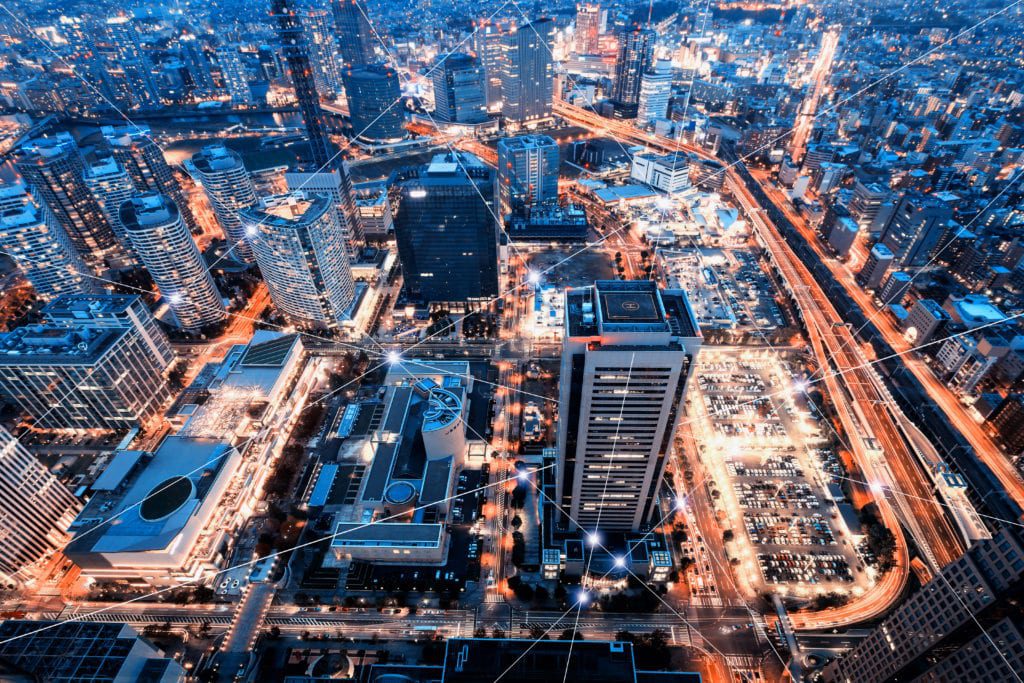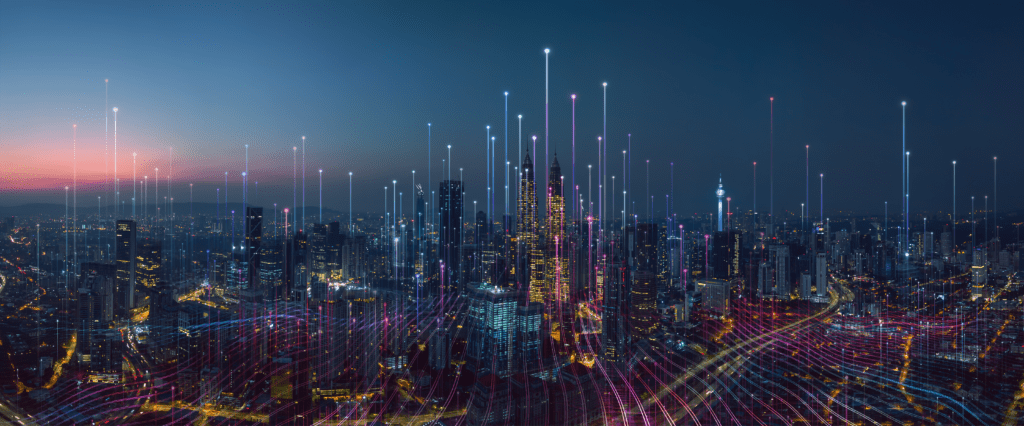The climate timebomb is ticking. To meet the challenge, our cities must become carbon neutral by the end of the decade. The UK Government has put in place ambitious sustainability targets which require immediate action in order to meet the deadline. Cities across the UK are playing their part to become smart cities. London and Glasgow, as part of their membership of the Carbon Neutral Cities Alliance, are aiming to achieve carbon neutrality within the next 10-20 years and Nottingham has pledged to complete by 2028.
Why the focus on cities?
Cities only cover around 3% of the Earth’s land, but they produce around 72% of its total greenhouse gas emissions. In addition, cities are rapidly growing and will continue to be major centers of emissions despite the impact of COVID-19. Consequently, decarbonizing large population centers delivers impact at scale. In the fight against climate change, our biggest battles must be fought in cities.
The impact of the pandemic and the unfolding climate emergency present us with a unique opportunity for change. Policymakers and urban dwellers can play a leading role in rethinking urban planning, to build back our cities more sustainably. We need a circular approach to our energy and utilities, alongside solutions for clean electrification, smart digital technology, efficient buildings and infrastructure.

Beginning with buildings
Buildings are a core component of our smart cities. They have a range of purposes, from dining, shopping and sleeping to learning, working and recovering.
The buildings we enjoy and rely on have one thing in common – they all use energy. In fact, buildings consume around 30% of the world’s energy via their construction and operations and account for almost 40% of annual global greenhouse gas emissions. The construction of new buildings is extremely carbon intensive, yet 80% of the buildings standing in 2050 will have already been built today, the future retrofitting and adaption of our existing buildings has the greatest scope for decarbonizing the UK building stock.
Buildings encompass a variety of systems that work behind the scenes, from the general electricity we use to the heating, ventilation and cooling of our rooms. Yet, in many buildings, energy is still wasted on actions like lighting, cooling or heating unoccupied areas. Fortunately, we can target this wasted energy without impacting the function of the building or the satisfaction of its occupants.
Reducing inefficiencies to become smart buildings
We can connect, collect and monitor data from our buildings and their system components remotely. In doing so, we can use smart analytics to identify inefficiencies or issues with their operations. Not only can this insight help to reduce our carbon emissions, but also to increase the building resiliency by protecting their critical assets and avoid operational losses through unplanned downtime.
Furthermore, occupancy and environmental sensors can inform the way we use spaces. We can analyze usage patterns, which can lead to the improved use of a building with safer and more efficient layouts. Meanwhile, they can ensure comfortable and healthy conditions, and that buildings are well ventilated. With the right approach, digital technologies can meet the needs of the planet and people. Intelligent digital systems in buildings do both.
Unleashing the digital grid to make it smarter
Renewable fuel sources currently account for 30% of the UK’s electricity generation. By 2050, it will be 85%. However, there will also be a significant increase in demand.
Power consumption in the UK is expected to grow 40% by 2050, with e-mobility and residential heating accelerating the trend. How can electric utilities satisfy spiraling demand, while still reducing emissions? We can cut building emissions, but it won’t be enough unless the underlying electrical supply is also clean and efficient. Renewables are making a big impact, but adoption has been slowed by intermittency and a general passiveness from the large scale utilizes to change their energy mix.
Maintaining grid stability
Centralized power generation will remain critical to grid stability, but distributed energy resources (DER) – such as solar panels, microgrids and storage – will also be crucial. In 2008 there were 80 points of generation in the UK versus over one million today. More people are generating and storing their own energy and then selling excess power back into the grid. These ‘prosumers’ can help to balance supply issues on the wider grid. However, DERs introduce a lot of additional complexity for operators to consider.
It’s necessary to analyze power flow, capacity, and resilience across a myriad of new sources, and in real-time, to ensure stability. Add e-mobility into the mix and you can see a future that’s not just about moving from point A to point B, but as a mobile battery source. The UK has a new form of energy storage and for the first time in history, it’s mobile. Smart meters provide the raw data to anticipate demand, while greater grid automation enables operators to respond quickly to supply interruptions and reduce costs. Only by making our grid ‘smarter’ can we complete the decentralization and decarbonization of energy.
A new industrial strategy for sustainability

In pushing for greater efficiency and sustainability in smart cities, we forget the operations that act as its foundation, from water to food production.
Industrial processes usually exist on the edge of our large urban centers, but they are no less crucial to the running of a city or the health of the economy. With supply chains becoming more localized due to the global pandemic, British manufacturing has a bright future ahead of it – but it must also be smarter and more sustainable. Our future industrial strategy should be founded on three core pillars: universal automation, sustainable efficiency, and software-centric automation. These create a firm base for protecting the environment and improving health and safety, whilst also enabling real-time data sharing and remote operation. The result is greater sustainability and step-change improvements in productivity and cost savings, ensuring that we can scale at pace.
Intelligent application of technologies in smart cities
Tomorrow’s challenges will not be addressed with new hardware alone. It will require the intelligent application of software-based technologies and the power of AI. Yet many industrial ecosystems, sadly, aren’t open and interoperable by design. New technology often isn’t compatible and can’t be implemented easily into existing systems, which only slows our ability to evolve and improve our industrial processes.
Instead, manufacturers should embrace open standards and interoperable, ‘plug and produce’ automation software components, much as the IT and technology industries have in recent years. When we share our insight and develop based on open standards, it becomes much easier to adopt the game-changing AI technologies that can transform our industries for the better. When we collaborate and communicate, our challenges suddenly don’t seem so big.
Smart homes, a smarter future
A focus on the sustainability of businesses and cities cannot distract us from domestic consumption.
Residential housing is set to become the biggest consumer of electricity globally. EV charging, the electrification of heat and increased occupancy as more people work from home will see consumers’ electricity consumption dramatically increase over the next 10 years. Efficient energy management is more important than ever to ensure homes are powered sustainably and intelligent enough to optimize their own energy needs, without sacrificing comfort. The basis for this goes beyond smart home technology and requires a fully connected and integrated power management system for the home. When consumers have real insight into the energy use within the home, they can make effective decisions that cut waste and have a real impact.
Sustainable homes of the future
Tomorrow’s sustainable homes will learn and anticipate when, where and how much energy is required to light, heat, power and charge to meet occupant needs effectively and sustainably. Advances in solar technology will make it a feasible energy source for a wider range of residential homes and geographies. Electric vehicles will double up as energy storage systems and intelligent smart meters will ensure buildings can produce, store and manage their own energy consumption too. The result will be green, net zero homes that actively reduce our carbon footprint.
We can’t beat climate change in silos. People, governments and industries won’t be able to make a lasting dent in emissions unless they work together and devise a common approach. Ultimately, we must build a completely connected ecosystem that incorporates smart buildings, homes and grids to create hyper-efficient, sustainable and scalable smart cities. A shared approach that integrates and leverages digital technology will help us save the planet, while improving living standards for all. For more information on Smart Cities, read Jean-Pascal Tricoire’s blog here.



